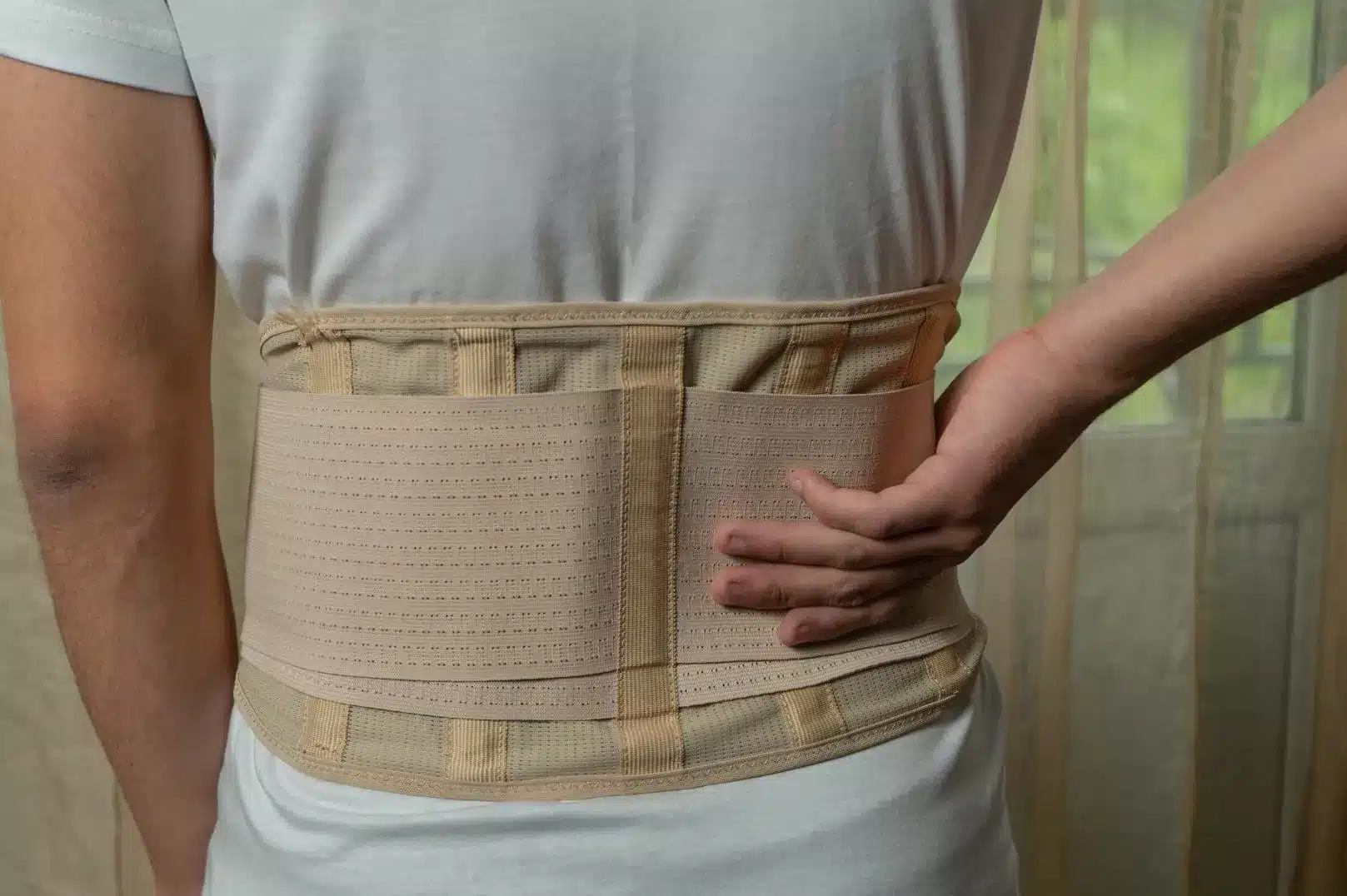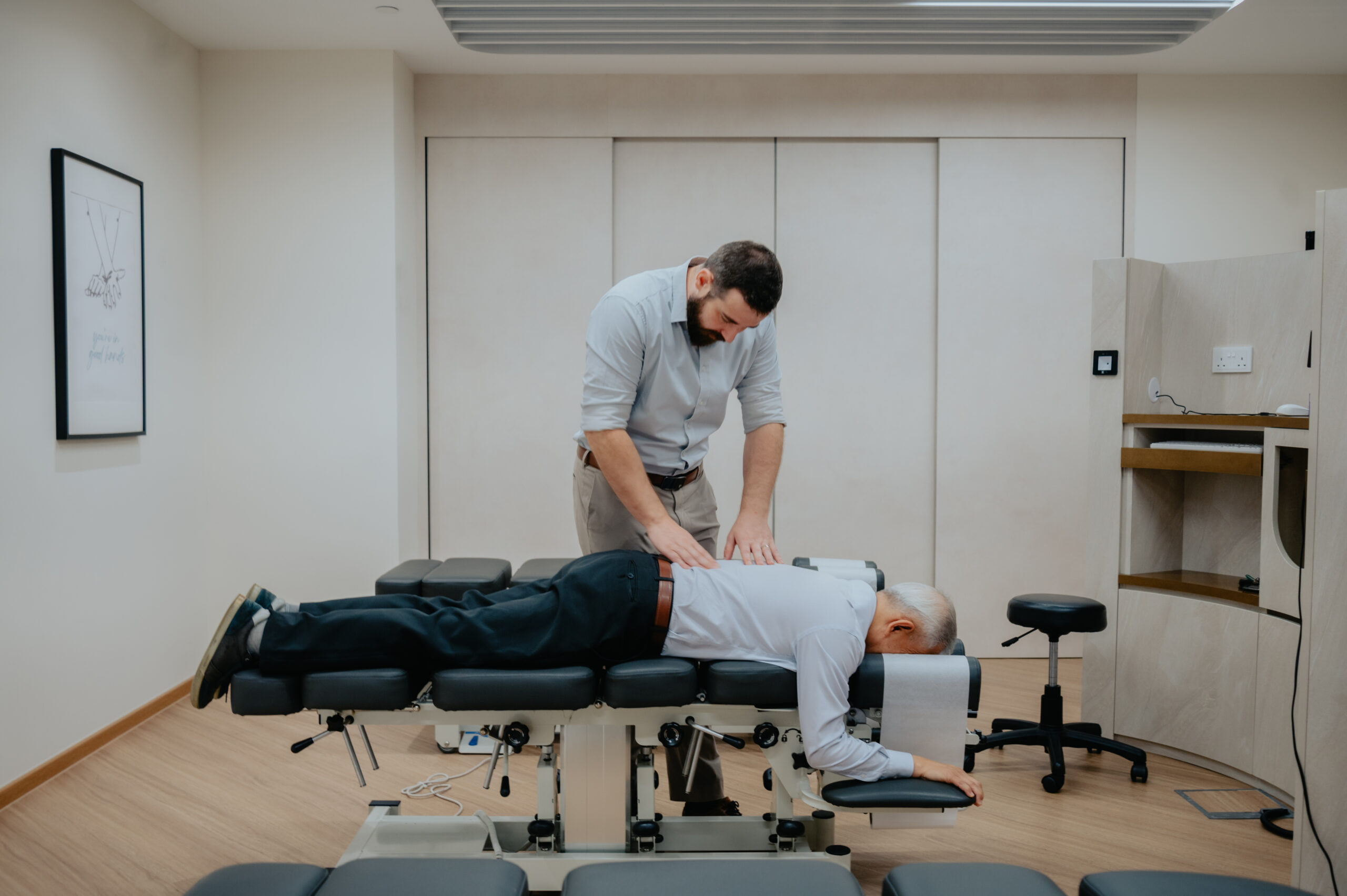Welcome to our guide on back braces! If you’re curious about how back braces work, their effectiveness in improving posture, alleviating pain, or even addressing specific conditions like herniated discs, scoliosis, and lower back pain, you’re in the right place. We’ll also explore their impact on various activities, such as sleeping and lifting. Plus, we’ll discuss the potential role of chiropractic care in pain management. Let’s dive into the world of back braces and find out if they’re the solution you’ve been looking for.
How does a back brace work?
Before we dive into the specifics of whether a back brace can help correct bad posture, let’s understand how these devices work. Back braces, also known as posture correctors or posture braces, are designed to provide support to the spine and surrounding muscles. They typically consist of a fabric garment that wraps around the torso and includes straps that pull the shoulders back.
The main mechanism behind a back brace’s functionality is its ability to provide external support to the back and shoulders. By gently pulling the shoulders into a more upright position, the brace aims to encourage proper alignment of the spine. This can be particularly useful for individuals who tend to slouch or have rounded shoulders.
Additionally, back braces serve as a constant reminder to maintain good posture. When worn regularly, they help develop muscle memory, making it easier for individuals to sit or stand with improved posture even when the brace is not worn.
Can a back brace help to correct or straighten posture?
One of the primary reasons one would consider purchasing a back brace is the hope that it will correct or straighten their posture. While back braces can be effective tools for encouraging better posture, they are not a guaranteed solution for correcting posture issues.
Here’s how a back brace can help:
- Encourages awareness: When worn consistently, a back brace can remind an individual to sit or stand up straight. Over time, this awareness can lead to improved posture habits.
- Provides support: The external support offered by a back brace can relieve some of the strain on the back muscles, making it easier for one to maintain a more upright posture.
However, it’s essential to remember that wearing a back brace alone is not enough. To correct posture effectively, it’s crucial to combine the use of a brace with posture-strengthening exercises and stretches. Working with a physical therapist or chiropractor can also provide valuable guidance in developing better posture habits.
Tip: Learn how chiropractic care can help with bad posture.
Does a back brace help with pain relief?
Another common reason for considering a back brace is to alleviate pain, especially in the lower back. Bad posture can lead to various musculoskeletal issues, resulting in discomfort and pain. So, can a back brace help with pain relief?
The answer is yes, but with some caveats:
- Temporary relief: Back braces can offer temporary relief by providing support to the spine and reducing the load on the muscles. This can be beneficial for individuals experiencing acute pain.
- Not a long-term solution: While a back brace can provide short-term relief, it should not be seen as a long-term solution for chronic pain. Relying solely on a brace can lead to muscle weakness and dependency.
- Combination approach: For lasting pain relief, it’s advisable to combine the use of a back brace with other pain management strategies, such as physical therapy, exercises, and lifestyle modifications.
Tip: Learn how chiropractic care can help with pain relief such as back pain, neck pain and more!
Does a back brace help a herniated disc?
Herniated discs are a common spinal condition that can cause intense back pain and discomfort. Individuals with herniated discs often seek various treatment options to alleviate their symptoms. Can a back brace be one of those options?
The role of a back brace in managing a herniated disc is to provide support to the affected area. By stabilising the spine and limiting movement, a brace can reduce the pressure on the herniated disc and potentially relieve some of the associated pain.
However, it’s important to note that a back brace is not a cure for a herniated disc. It can help manage symptoms and provide support during the healing process, but it should be used in conjunction with other treatments recommended by a healthcare professional, such as physical therapy or medication.
Tip: Find out how chiropractic care can help support a herniated disc’s healing journey.
Does a back brace help with scoliosis?
Scoliosis is a condition characterised by an abnormal curvature of the spine, often in an “S” or “C” shape. It can lead to various issues, including pain and impaired posture. For children and adolescents with scoliosis, wearing a back brace is a common treatment approach.
A scoliosis brace, also known as a spinal orthosis, is designed to prevent the curvature from worsening. These braces are custom-fitted to the individual’s body and are typically worn for a specified number of hours each day.
The effectiveness of a scoliosis brace depends on several factors, including the severity of the curvature and the commitment of the patient to wear it consistently. In many cases, bracing can help slow or halt the progression of scoliosis.
Tip: Learn how chiropractic care can help with managing scoliosis.
Does a back brace help with lower back pain?
Lower back pain is a common complaint among both adults and adolescents, often attributed to factors like poor posture and muscle imbalances. In some cases, a back brace may be recommended to help alleviate lower back pain.
Here’s how a back brace can assist with lower back pain:
- Support: The brace provides additional support to the lower back, reducing the load on the muscles and ligaments in the area.
- Posture correction: By encouraging better posture, a back brace can help relieve some of the stress on the lower back, which can contribute to pain.
- Temporary relief: For acute lower back pain, wearing a brace can offer temporary relief by stabilising the spine.
However, it’s essential to use a back brace as part of a comprehensive pain management plan. This plan should include exercises to strengthen the core and back muscles, as well as lifestyle modifications to prevent further strain on the lower back.
Tip: How does chiropractic care provide lower back pain relief? Find out here!
Does a back brace help with curved spine?
A curved spine, medically known as kyphosis or lordosis, can result in an abnormal curvature of the upper or lower spine. While a back brace is not typically used to treat kyphosis or lordosis directly, it can be employed as part of a broader approach to improving spinal alignment.
In cases where kyphosis or lordosis is related to poor posture, a back brace that focuses on encouraging proper alignment of the spine may be beneficial. By providing external support and gently pulling the shoulders back, such a brace can help individuals with these conditions maintain a more neutral spine position.
However, it’s important to consult with a healthcare professional, such as an orthopaedic specialist or physical therapist, to determine the most appropriate plan for addressing a curved spine. This plan may include exercises, stretches, and lifestyle adjustments in addition to using a back brace.
Does a back brace help with sleeping?
Getting a good night’s sleep is essential for overall health and well-being. For some individuals, especially those with back pain or posture issues, sleeping comfortably can be a challenge. So, can a back brace assist with sleeping?
While back braces are not specifically designed for sleeping, they can indirectly help improve sleep quality by addressing underlying issues such as pain or discomfort caused by poor posture. Here’s how:
- Pain relief: If you experience back pain that disrupts your sleep, wearing a back brace during the day can help alleviate that pain, making it easier to sleep comfortably at night.
- Posture support: A back brace can encourage better posture during the day, which may translate to improved posture when lying down to sleep.
However, it’s important to note that sleeping with a back brace on is generally not recommended, as it can be uncomfortable and may not provide any additional benefits during sleep. Instead, focus on using the brace as directed during waking hours to address posture and pain issues that may be affecting sleep.
Does a back brace help with lifting?
If you’re involved in sports or activities that require lifting heavy objects, such as weightlifting or manual labour, you may wonder whether a back brace can provide added support and protection during these activities.
A back brace can indeed help with lifting by providing extra stability to the spine and reducing the risk of injury. Here’s how:
- Spinal support: The brace can help stabilise the spine, reducing the strain on the lower back when lifting heavy objects.
- Reminder to use proper form: Wearing a back brace can serve as a reminder to you to use proper lifting techniques, such as bending at the knees and keeping the back straight.
However, it’s essential to use a back brace in conjunction with safe lifting practices and techniques. The brace should not be relied upon as the sole means of protection during lifting activities. Proper training and form are crucial to prevent injuries while lifting.
Consider chiropractic care for pain management
While a back brace can be a useful tool in improving posture and providing temporary pain relief, it’s essential to consider a holistic approach to your health. Chiropractic care is one such approach that can complement the use of a back brace.
Chiropractors are healthcare professionals trained to diagnose and treat musculoskeletal issues, including those related to posture and back pain. Here are some ways in which chiropractic care can benefit you:
- Spinal adjustments: Chiropractors can perform spinal adjustments to correct misalignments, which can help improve posture and alleviate pain.
- Customised plans: Chiropractors can create individualised plans that may include exercises, stretches, and lifestyle recommendations to address your specific needs.
- Education: Chiropractors can educate on proper posture and body mechanics, empowering them to take an active role in improving their posture and overall well-being.
Incorporating chiropractic care into your healthcare routine, in addition to using a back brace if recommended, can provide a well-rounded approach to addressing posture issues and managing pain.
Finding the right balance: back braces vs chiropractic care
In conclusion, back braces can be a valuable tool for addressing posture issues and providing support for certain conditions. They may offer relief from pain and discomfort, help with spinal conditions like scoliosis or herniated discs, and assist in activities like sleeping and lifting.
However, it’s essential to remember that back braces are not a one-size-fits-all solution. Consult with a healthcare professional, such as a chiropractor, to determine if a back brace is right for your specific needs. Chiropractic care can be a complementary approach to help manage pain and improve overall spinal health.
Ultimately, the effectiveness of a back brace depends on the individual, their unique circumstances, and the guidance of a healthcare expert. We hope this guide has shed light on the possibilities and considerations surrounding back braces, empowering you to make informed choices for your health and well-being. If you have further questions or concerns, book a spinal check-up now to get personalised advice on your needs!











